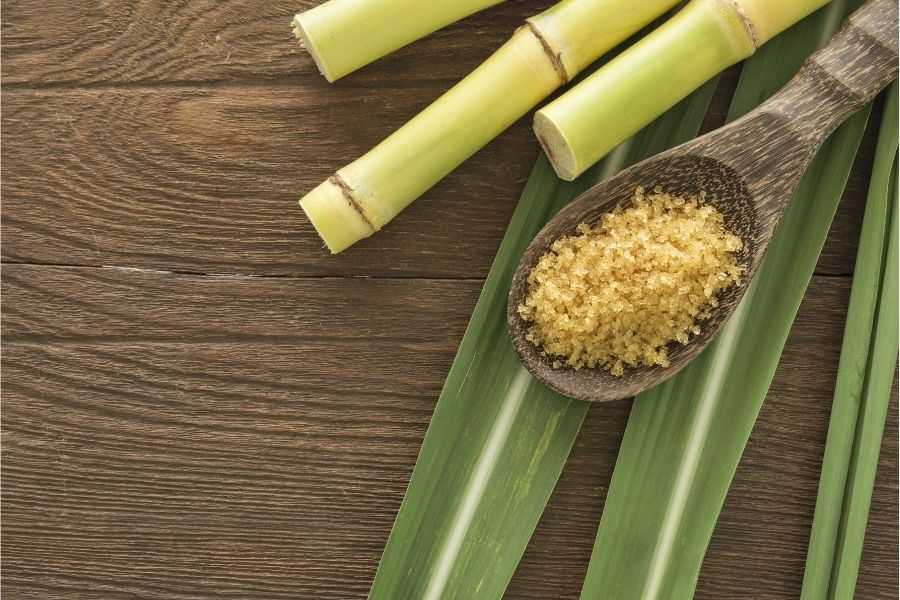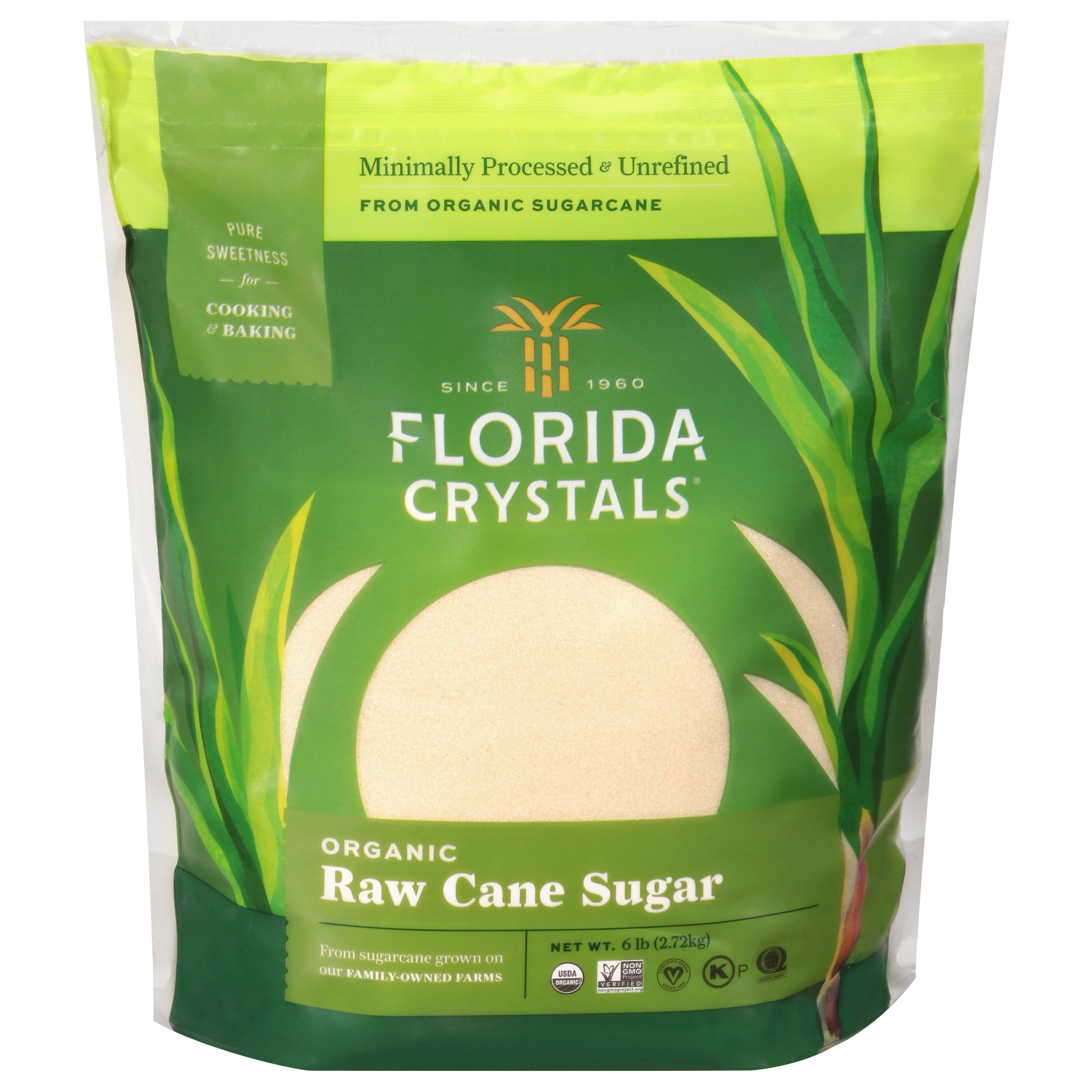Recognizing Cane Sugar Processing: A Comprehensive Overview of the Stages
Checking Out the Comprehensive Steps Involved in Walking Stick Sugar Processing From Harvesting to Refinement
The procedure of cane sugar manufacturing incorporates a collection of detailed steps, beginning with the mindful harvesting of sugarcane and finishing in the refinement phases that guarantee the end product meets market criteria. Each stage, from the removal of juice to the purification and condensation processes, plays a crucial role in identifying the quality and personality of the sugar. Comprehending these phases not only highlights the complexity of sugar manufacturing but likewise increases important inquiries regarding performance, sustainability, and advancement in the industry. What implications do these elements have for future practices?
Collecting Sugarcane
Collecting sugarcane is a crucial action in the walking cane sugar handling chain, as it straight affects the high quality and yield of the end product. Proper timing and techniques are crucial during this phase to ensure optimum sugar web content and decrease losses. Typically, sugarcane is harvested when it gets to maturation, typically 12 to 18 months after planting, characterized by a high sucrose concentration.
:strip_icc()/How-to-Plant-and-Grow-Sugar-Cane-965303384-2fdac181359d44c185dfa7988fc181a8.jpg)
Post-harvest, the sugarcane needs to be refined swiftly to avoid sucrose degradation. Preferably, harvested cane should be transported to processing centers within 24 hours to preserve sugar top quality. For that reason, reliable logistical planning is critical to maintain the stability of the collected plant throughout the supply chain.
Extraction Refine

The smashed walking stick goes through a collection of pressing operations to maximize juice recovery. Usually, warm water is sprayed onto the smashed cane, developing a countercurrent circulation that aids liquify the sugar while additionally aiding in the removal procedure. The juice gathered from this operation has not only sugar but also numerous natural substances and impurities.

To improve removal performance, some centers may employ diffusion approaches, where the sugarcane is taken in hot water, permitting the soluble sugars to diffuse into the liquid. The resulting juice, abundant in sucrose, is then guided to subsequent handling stages, laying the structure for purification and refinement. The extraction process is hence essential in figuring out the quality and yield of the final sugar item.
Purification Strategies
The purification methods utilized in walking cane sugar handling are essential for changing the raw juice into a top quality sugar item. These methods largely intend to get rid of pollutants, such as dirt, plant materials, and not natural materials, which can adversely influence the final item's taste and color.
One of the most usual purification methods is explanation. This process entails adding lime and warm to the raw juice, which facilitates the coagulation of pollutants. The resulting precipitate is then gotten rid of through sedimentation or filtration, generating a clearer juice. Furthermore, using phosphoric acid can improve the explanation procedure by further binding pollutants.
Another substantial strategy is carbonatation, where co2 is introduced to the clarified juice. This reaction creates calcium carbonate, which captures staying impurities and promotes their removal.
In addition, turned on carbon therapy might be used to adsorb any kind of continuing to be colorants and natural contaminations, ensuring a more refined item. The mix of these approaches properly prepares the sugar juice for succeeding action in the refining procedure, setting the stage for the production of high-grade walking cane sugar.
Formation Techniques
After the purification stage, the next important action in walking stick sugar handling entails condensation techniques, which play a critical function in changing the cleared up juice into solid sugar. This procedure commonly uses 2 primary approaches: spontaneous formation and controlled crystallization.
In spontaneous crystallization, supersaturated sugar remedies are enabled to cool normally, resulting in the formation of sugar crystals with time. This technique is simpler however may result in irregular crystal sizes and reduced purity degrees. On the other hand, controlled crystallization is an extra accurate method where temperature level, seeding, article source and focus representatives are thoroughly handled. This method permits the consistent development of sugar crystals and higher pureness.
Throughout formation, the cleared up juice is focused via evaporation, boosting its sugar content up until it gets to supersaturation. As soon as this point is attained, either approach can help with the formation procedure. Cane Sugar Processing. The resultant sugar crystals are then separated from the staying syrup via centrifugation
Ultimately, the selection of formation method affects the high quality, dimension, and pureness of the last sugar item, making this action essential in the overall walking stick sugar processing procedure.
Refinement and Packaging
Just how can the pureness and top quality of walking cane sugar be further improved after condensation? The refinement process plays a critical duty in achieving top notch walking cane sugar. Adhering to formation, sugar undertakes a complete cleaning to get rid of contaminations and recurring molasses. This is normally achieved making use of cozy water or heavy steam, which assists dissolve and extract undesirable components while maintaining the sugar crystals.
Following, the sugar undergoes a process called centrifugation, where it is rotated at broadband to separate the detoxified sugar crystals from the staying liquid. After centrifugation, the sugar is often more improved with a method called carbonization or phosphatation, which makes use of turned on carbon or phosphoric acid to eliminate shade and off-flavors.
As soon as fine-tuned, the sugar is dried to accomplish the desired moisture web content, ensuring that it continues to be steady throughout storage space and transportation. The final action entails packaging the polished sugar in moisture-proof and closed containers to keep its high quality and stop contamination. Cane Sugar Processing. Correct packaging not just expands service life sites but likewise helps with very easy handling and distribution, making sure that consumers receive sugar that satisfies the greatest criteria of purity and quality
Conclusion
The detailed actions included in cane sugar processing, from the thorough harvesting of sugarcane to the intricate refinement and packaging stages, emphasize the importance of each phase in making sure premium sugar manufacturing. Optimal harvesting methods, effective removal approaches, and rigorous purification processes jointly add to the last item's pureness and security. The crystallization and subsequent packaging methods better boost the honesty and life span of the sugar, highlighting the complexity and precision intrinsic in this important agricultural market.
The procedure of walking cane sugar manufacturing incorporates a collection of detailed actions, beginning with the cautious harvesting of sugarcane and culminating in the improvement stages that guarantee the final product satisfies market requirements. Ideally, harvested cane must be transported to refining centers within 24 hours to protect sugar high quality.In spontaneous crystallization, supersaturated sugar options are enabled to cool normally, leading to the formation of sugar crystals over time - Cane Sugar Processing. The refinement process plays a crucial Going Here duty in attaining high-grade walking stick sugar.The extensive actions involved in walking cane sugar processing, from the precise harvesting of sugarcane to the intricate improvement and product packaging stages, emphasize the significance of each stage in making certain high-grade sugar production